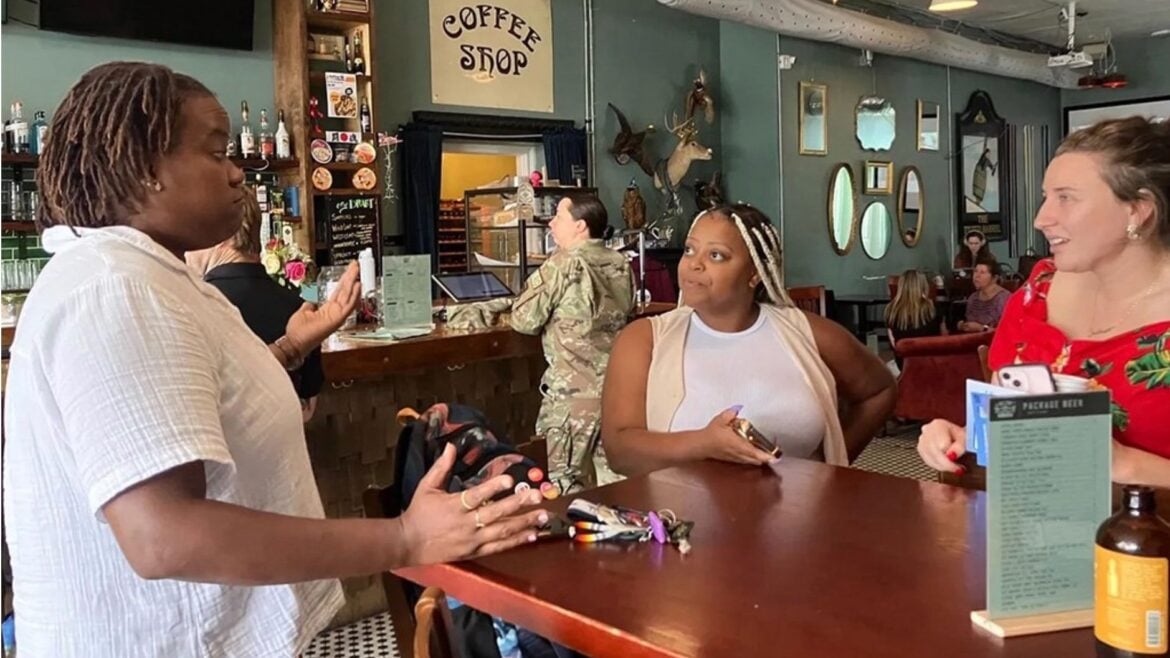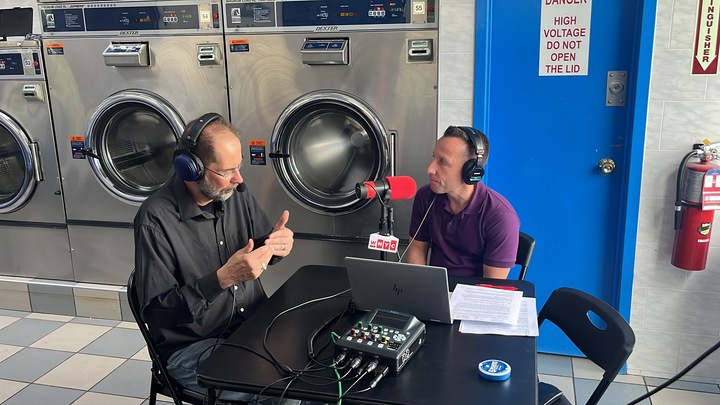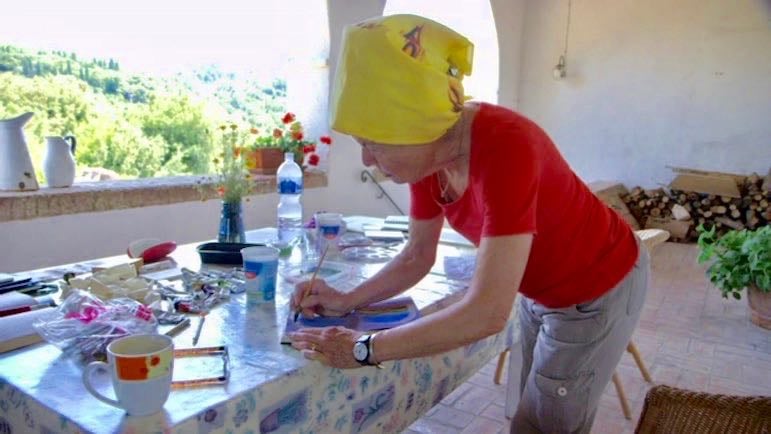What’s next for engagement in public media? Beyond America Amplified

Gulf States Newsroom
As part of their engagement with and reporting on the new 2nd Congressional District, Gulf States Newsroom Community Engagement Reporter Maya Miller talks with patrons of Hilltop Public House in Montgomery, Ala.
Public media has always been a different beast than its cousins in the commercial broadcast media world. True to the mandate articulated in the 1967 Public Broadcasting Act, public media stations have long answered the call to “address national concerns and solve local problems.” Whether in the form of a local public affairs call-in show, a town hall event or a deeply researched local voter guide, public media have been uniquely responsive to the communities they serve for decades.
But much has changed in the media landscape in the years since the establishment of public broadcasting. There is so much noise, and it is difficult for audiences and communities to discern where they can find information that will meet their needs, address their concerns and provide a sense of connection.
For the past six years, the America Amplified initiative has encouraged, supported, coaxed and inspired public media newsrooms to deepen their relationships with the communities they serve and find new ways to respond to local information needs. This kind of engagement work is based on listening first and reporting second to ensure that newsrooms produce journalism that accurately represents and meets local needs and has the greatest impact. America Amplified’s mandate has been to help bring the strategies and the mindset of this kind of community engagement into public media newsrooms across the country.
It’s clear that better engagement is needed. Study after study has shown that trust in news is lower than ever, radio and digital audiences are declining, and the public’s hunger for local context, content and connection continues to be an unmet need. Whatever it is called — “community engagement journalism,” “community-informed content strategies,” “participatory journalism” — in order to thrive and, frankly, survive, newsrooms must learn to engage with the communities they serve to identify and address news and information gaps and rebuild trust.
Our Election 2024 project, working with more than 50 public media stations across the country, demonstrated clear wins with engagement journalism: thousands of new sign-ups for public media newsletters and thousands of questions about election processes answered. New audiences engaged and highlighted, new voices amplified and featured. At Vermont Public, engagement with all 14 counties in the state drove the station’s editorial approach to election coverage. In Alabama, Gulf States Newsroom targeted coverage and engagement in a new congressional district and saw a measurable increase in trust, according to producer Nellie Beckett, including greater attendance at listening sessions and more engagement online and in person. WFYI in Indianapolis produced a comprehensive voter guide for central Indiana partly based on engagement and listening and saw the highest-performing election content it had ever produced.
Later this year, the America Amplified initiative will begin a transition where staff will move on to different endeavors. We’ve been around since 2019 with support from CPB and hosted by member stations KCUR in Kansas City, Mo., and, more recently, WFYI in Indianapolis. During that time we’ve laid a foundation for a new framework for public media journalism, one that reprioritizes local news and puts local information needs and local engagement at the core of its news operations.
In preparation for this transition, we’ve streamlined and updated all of the resources on our website, including our Community Engagement Playbook. And we’ve set up a panel of experienced engagers in public media (an Engagement Brain Trust!) who can be called on for engagement mentoring and support by any public media newsroom. We’re also collaborating on future initiatives that involve making community listening a critical and central part of a newsroom’s workflow.
In the meantime, we’re taking inventory of the lessons learned from these six years of engagement coaching. First, engagement cannot exist as a sidebar to reporting; it’s not only an event designed by membership to reward PBS Passport holders. It is not only a forum of elected officials addressing local issues to a crowd of engaged citizens. It is not only a trivia night at the local craft brewery. Engagement is all of those things, but more importantly, it is a profoundly different mindset about how to approach what is a story, what is news and what is journalism.
And here’s the second thing: It’s good for us, too. Our communities want to engage with us. We know it’s good for business because we have the data to back it up: Stories powered by community input get wider readership, more social media engagement and increase the likelihood that a reader or listener might become a paid subscriber. Moreover, it goes a long way in meeting the kinds of unmet needs for local news and community connection identified in the recent RUN study commissioned by Greater Public, Station Resource Group and the Public Media Content Collective.

Some of the most rewarding impacts we’ve observed at America Amplified are the changes in public media newsrooms once they’ve been exposed to this way of doing journalism. Over and over again they go from curious to convinced. Like staff of the Montana Public Radio podcast The Big Why who now understand that responding to audience questions is a winning format for the station; or the digital media producer at KRWG in Las Cruces, N.M., who says, “I think this is what journalism SHOULD be! Being deeply involved with the community you serve builds trust with the audience and in this day and age, that is something we desperately need”; or the team at WNYC who brought community listening to neighborhood laundromats in the lead-up to the 2024 election in their “Suds and Civics” project. (Their motto: “Soap gets laundry done. Conversations get democracy going!”) The project brought new voices onto their air and, according to producer George Bodarky, really allowed the community to shape the narrative around what matters.
We want this engagement momentum to be sustained. Here’s what we’ve learned are the most important elements for that:
- Finding support: Under-resourced newsrooms must have support from upper management to make the organizational changes necessary to prioritize community needs, and they must be able to shed other responsibilities to take on engagement.
- Revising workflows: Engagement must be integrated into newsroom workflows so that it is not an afterthought but is embedded in the ways reporters cover their beats and communities.
- Building collaboration: Partnerships with like-minded news organizations and community groups are critical and will help build a civic infrastructure that strengthens news ecosystems and communities.
- Fostering connection: Community members are looking for opportunities to connect with each other and to overcome polarization and isolation. Public media organizations have a critical role to take on as a convener and to help people make these connections.
We’ve just begun this work in public media and, frankly, it is moving too slowly. As the Wyncote Foundation recently noted, public media has huge potential to be a solution to the challenges facing local news, but not enough newsrooms have been willing or able to take on the degree of organizational and cultural evolution necessary to make these changes stick.
As America Amplified steps back, it is now up to newsrooms and station leadership to pick up the baton and carry it around the track. Run fast! We really don’t have time for a marathon. The dozens of us who have served as trainers, coaches and strategists at America Amplified will cheer you on in your engagement and as you create the most relevant and useful journalism that public media can offer.
Alisa Barba is managing director of America Amplified, a CPB-funded initiative to support community-engaged journalism in public media.






